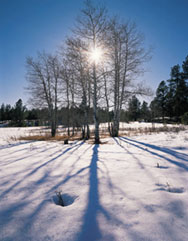By Barbara Ficarra
Be Careful When Shoveling in a Winter Wonderland
 While you were sleeping the snow began to fall. Your alarm clock wakes you with the latest weather forecast. “Accumulations of snow totaling 10 inches cover the roads, bitter temperatures of 15 degrees reach across the region and with the wind chill it feels like 2 degrees. Strong gusty winds are whirling between 45 and 50 miles per hours; expect major delays across the northeast today. Schools are closed today and it’s best to stay off the roads……,” says the upbeat weather reporter.
While you were sleeping the snow began to fall. Your alarm clock wakes you with the latest weather forecast. “Accumulations of snow totaling 10 inches cover the roads, bitter temperatures of 15 degrees reach across the region and with the wind chill it feels like 2 degrees. Strong gusty winds are whirling between 45 and 50 miles per hours; expect major delays across the northeast today. Schools are closed today and it’s best to stay off the roads……,” says the upbeat weather reporter.
You look out the window and a white blanket covers the landscape. It’s picture perfect and while your mind wonders with a fantasy of you snowboarding performing a perfect superpipe; you know you’ll need to trudge outside into the bitter cold to remove that snow from walkway and driveway.
While your kids are jumping for joy that schools are closed, you’re not so enthusiastic.
While shoveling seems innocent enough, there are some risks, and according to the U.S. Consumer Products Safety Commission, in 2007 more than 118,000 people were treated in hospital emergency rooms, doctors’ offices, clinics and other medical settings for injuries sustained while shoveling or otherwise removing ice and snow manually, and more than 15,000 were injured using snow blowers.
Injuries sustained include sprains and strains particularly in the back and shoulders, as well as lacerations and finger amputations.
This humdrum seasonal chore combines heavy lifting and cold weather, resulting in possible injuries to the back, and shoulder muscles if shovelers do not take the proper precautions.
“People tend to think of snow removal as just another household task, but it really involves a lot of bending and heavy lifting, particularly in wet snow,” says Robert Dunbar, MD, spokesperson for the AAOS and member of the Academy’s Leadership Fellows Program. “It may be especially dangerous for people who do not regularly exercise as their bodies, specifically backs, shoulder and arm muscles may not be prepared for that level of activity.”
Before you trek out into the snow, The Academy offers the following tips to prevent injuries:
- Make sure you always check with your doctor first because shoveling can place high stress on the heart. If you do have a medical condition or do not exercise regularly, consider having someone else remove the snow for you.
- Make sure you dress appropriately. Light, layered, water-repellent clothing provides both ventilation and insulation. It is also important to wear the appropriate head coverings, as well as mittens or gloves and thick, warm socks. Take a break if you feel yourself getting too hot or too cold.
- Make sure nothing blocks your vision. Keep hats and scarves out of your eyes. Watch for ice patches and uneven surfaces. Avoid falls by wearing shoes or boots that have slip-resistant soles.
- Make sure you do it early and often. Start shoveling when a light covering of snow is on the ground to avoid trying to clear packed, heavy snow.
Okay, so now you’re ready now to head out into the bitter cold let the shoveling begin; but wait, first check out these quick and easy tips to help you stay injury free!
Shoveling:
- Warm up your muscles
Shoveling can be a vigorous activity. Before you begin, warm up your muscles for 10 minutes with light exercise. Be sure to include your leg muscles — heart attacks and similar injuries are sometimes the result of working the smaller muscles of your arms and back while not using the large muscle groups of the legs.
- Pace yourself
Take frequent breaks and replenish fluids to prevent dehydration. If you experience chest pain, shortness of breath or other signs of a heart attack, seek emergency care, such as by calling 9-1-1.
- Use a shovel that is comfortable for your height and strength
Do not use a shovel that is too heavy or too long for you. Consider buying a shovel that is specially designed to prevent too much stooping. Space your hands on the tool grip to increase your leverage.
- Push the snow instead of lifting it
If you must lift, take small amounts of snow, and lift it with your legs: Squat with your legs apart, knees bent and back straight. Lift by straightening your legs, without bending at the waist. Then walk to where you want to dump the snow; holding a shovelful of snow with your arms outstretched puts too much weight on your spine.
- Do not throw the snow over your shoulder or to the side
This requires a twisting motion that stresses your back.
Well, now that you’re humdrum task is done, grab your kids and go build a snowman! 🙂

1 Comments
Leave a reply →